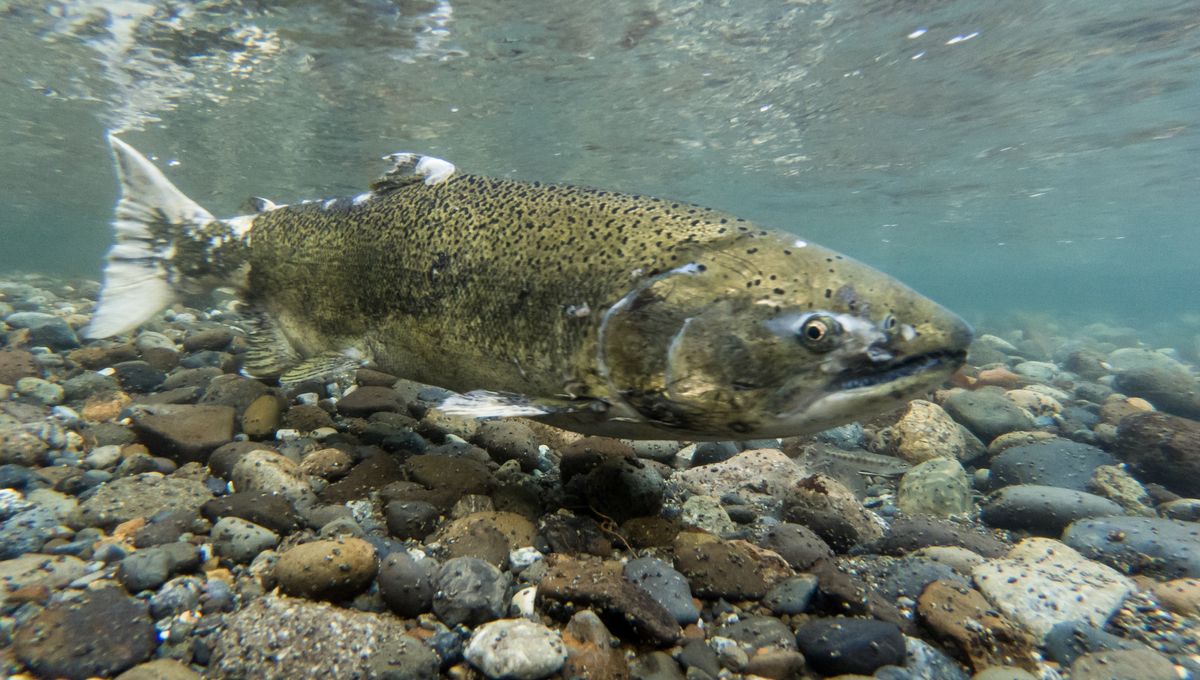
Adult winter-run Chinook salmon have been seen in Northern California’s McCloud River for the first time in decades.
On July 15, the California Department of Fish and Wildlife (CDFW) reported the sighting of an adult female Chinook salmon in McCloud River near Ash Camp, displaying spawning behavior and guarding her nest. They also spotted several smaller males vying for position in the river.
Winter-run Chinook salmon (Oncorhynchus tshawytscha) are a distinct population found in California’s Sacramento River System. Unlike others, they migrate upstream during the cold winter months and spawn in the heat of summer. Since salmon eggs don’t hatch if the waters are too warm, they rely on cooler, spring-fed streams to survive.
That delicate balance was disrupted in the early 1940s with the construction of the Shasta and Keswick dams, which blocked their migration to high-quality habitats in the upper Sacramento River system, including the McCloud River. Over the decades that followed, their population severely struggled.
In recent years, the CDFW worked with NOAA Fisheries, the US Fish and Wildlife Service, and the Winnemem Wintu Tribe to reestablish the endangered salmon population in its historic habitat upstream of the dams.
As part of the conservation effort, Chinook eggs were planted and incubated in the McCloud’s cool waters. Many of the resulting juveniles are then collected downstream, transported to the Sacramento River in Redding, and released to continue their journey to the Pacific.
However, it seems some slipped past collection facilities and ended up in the Shasta Reservoir. Biologists believe the winter-run Chinook recently seen in the McCloud likely spent a year or more in the reservoir lake before finding their way back upstream.
While these salmon have not completed the full migration from the Pacific Ocean to the McCloud River, their return to spawn naturally in these historic waters is a hopeful sign for the recovery efforts.
Beyond the McCloud River, winter-run Chinook salmon have been spotted in the North Fork of Battle Creek, swimming past Eagle Canyon Dam for the first time since new fish passage facilities were installed under the Battle Creek Restoration Project.
Spawning Chinook salmon have also been recorded in Klamath tributaries across both sides of the California-Oregon border after a huge project oversaw the removal of four hydroelectric dams from the river.
The CDFW says all of these sightings are an encouraging sign that the endangered salmon are returning to historic spawning waters. That comeback is especially significant as climate change drives higher temperatures in the Sacramento Valley, adding pressure to already struggling Chinook populations.
Source Link: For First Time In Decades, Winter-Run Chinook Salmon Spotted In Upstream Californian River